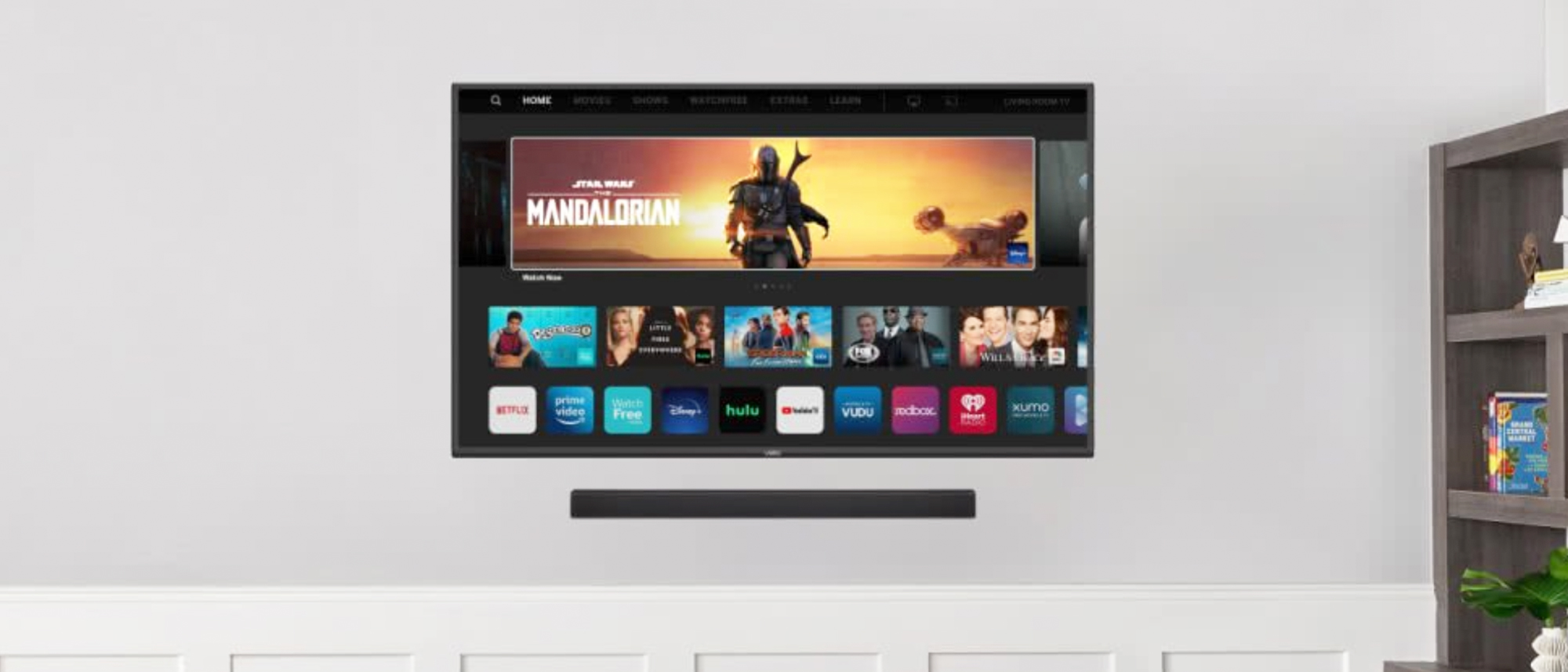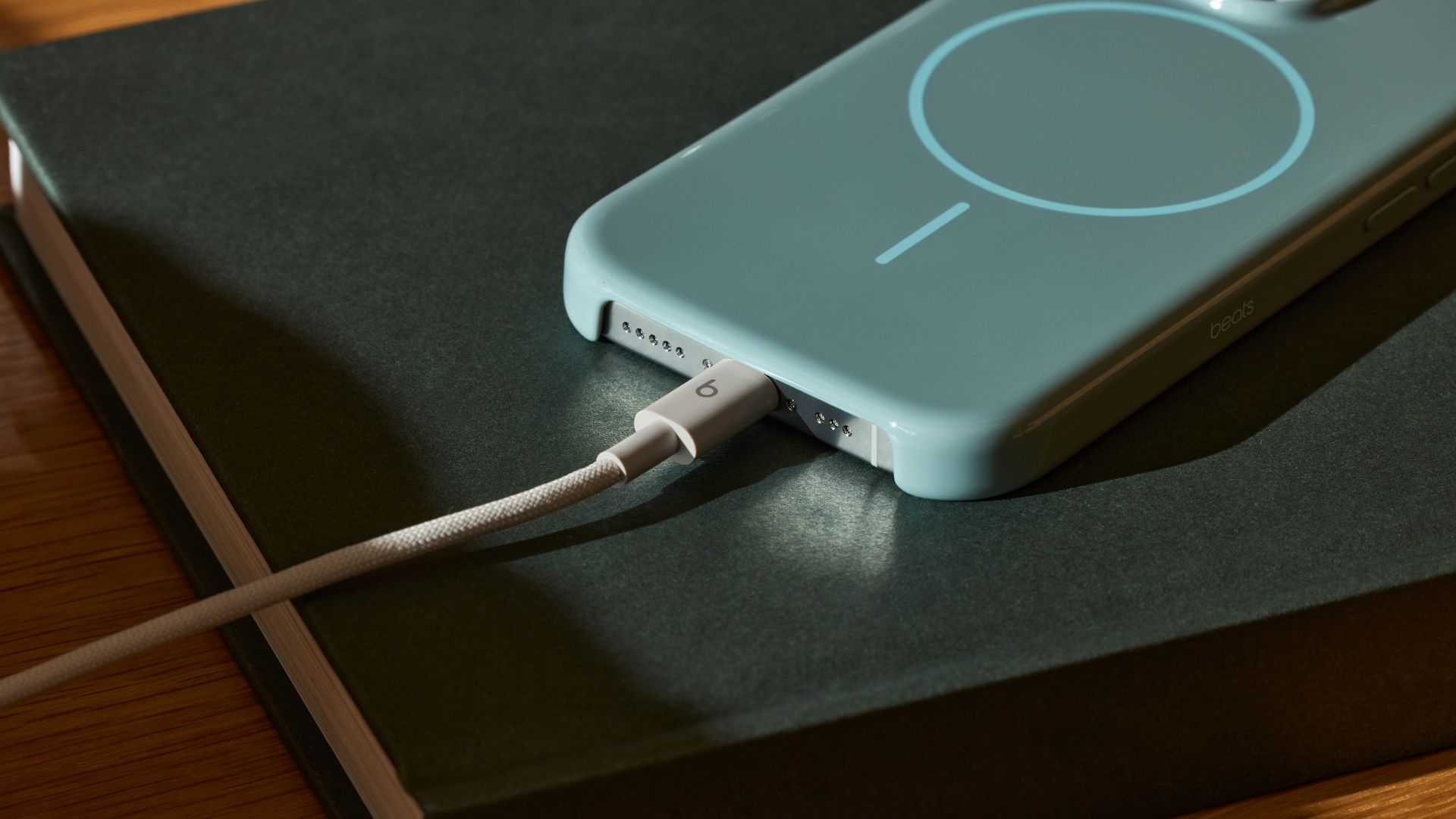Tom's Guide Verdict
A bargain 4K TV, the Vizio V-Series competes well on price if not always on performance.
Pros
- +
Good connectivity
- +
Good response for gamers
Cons
- -
Low brightness
- -
Weak audio
Why you can trust Tom's Guide
Price: $329.99
Model number: V505-H19
Screen size: 50 inches
Resolution: 3840 x 2160
HDR: Dolby Vision, HDR10, HDR10+ and HLG
Refresh rate: 60 Hz
Ports: 3 HDMI 2.1 (1 eARC); 1 USB; 1 Ethernet; 1 headphone jack; RF; composite; digital audio
Audio: 8 by 8 watts
Smart TV software: Vizio SmartCast
Size: 44.13 x 25.59 x 2.42 inches [w/o stand]
Weight: 21.54 pounds [w/o stand]; 22.05 pounds [w. stand]
Bargain big screen TVs involve making compromises for the price. Vizio's the-V-is-for-value 50-inch V-Series 4K TV follows the trend, sacrificing some brightness in this particular display. On the other hand, considering all the features it does include, it's definitely competitively priced.
The Vizio V-Series, for example, includes full-array local dimming backlighting, to improve contrast, and support for 4K formats including Dolby Vision, HDR10 (high dynamic range), HDR10+, and HLG (hybrid log-gamma, essentially HDR for broadcasts). It does not deliver dazzling performance, but the Vizio V-Series does well enough against other bargain sets in this tight and highly contested price range and size.
For example, Best Buy's 50-in Insignia F30 Series LED 4K UHD Smart Fire TV arguably doesn't perform as well as the Vizio V-Series and is $10 more. Conversely, TCL's 4-Series Roku TV sets look better and are easier to use for about $20 more. This is one of the best Vizio TVs in terms of value.
Vizio V-Series review: Pricing and availability
Available now, the V-Series is Vizio's 4K line for budget conscious buyers. There is a lower priced Vizio D-Series but those sets don't support 4K and should only be considered for kitchen TVs that aren't going to get much serious attention. The V-Series comes in 8 different sizes, starting at 40-inches and going all the way up to a 75-inch mode. The sweet spot, price-wise, is the 50-inch V-Series we tested for $329.99.
- 40 inches (Model V405-H19) - $229.99
- 43 inches (Model V435-H11) - $299.99
- 50 inches (Model V505-H19) - $329.99
- 55 inches (Model V555-H11) - $370.99
- 58 inches (Model V585-H11) - $459.99
- 65 inches (Model V655-H9) - $519.99
- 70 inches (Model V705-H3) - $649.99
- 75 inches (Model V755-H4) - $799.99
With this sort of affordable pricing, it's no surprise that the V-Series makes our list of the best TVs under $500 and best TVs under $1,000, with even the largest screen sizes selling for relatively low prices.
The next series up, Vizio's M-Series, represents a significant price escalation, along with some better performance. The 50-inch Vizio M-Series Quantum (M658-G1), for example, is more expensive than the same sized V-Series. However, in our testing, the M-Series model did better in producing the full color gamut and kicked out a much brighter picture.
The Vizio V-Series shares most characteristics across all of the screen sizes, with the same full-array backlighting and the same port selections and features. We also expect performance to be fairly similar, regardless of which size model you're looking at, so our recommendations apply across the entire V-Series model line.
Vizio V-Series review: Design
Wrapped in a black plastic chassis, the Vizio V-Series looks similar to other sets in this class. It uses a pair of V-shaped legs, for example, positioned near each end of the set to support it on a tabletop. If you'd prefer a wall mount for this set, you should purchase a standard VESA 200 x 200 millimeter bracket, which can cost anywhere from $25 to $80. (Check out the best TV mounts to see what options we recommend.)
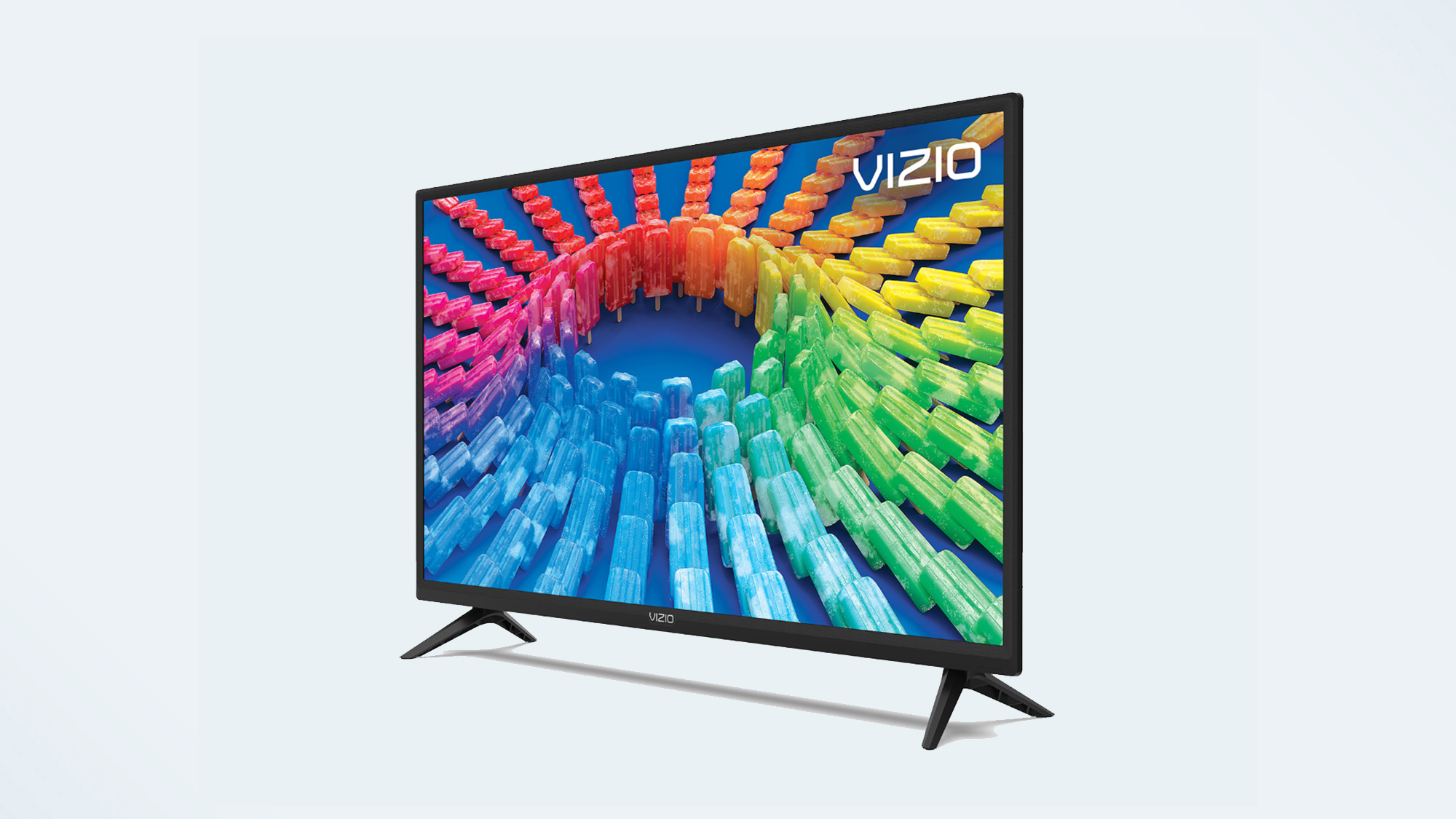
However you choose to set up the Vizio V-Series, you'll have a relatively easy time of it. It only weighs 21.16 pounds and is relatively thin, measuring 44.13 x 25.6 x 2.42 inches.
Vizio V-Series review: Ports
Vizio has equipped the 50-inch V-Series with enough connectivity to make it suitable for a living room setup or dorm room.

There are three HDMI 2.1 ports, including one that supports eARC (enhanced audio return channel). Using the eARC port with a compatible sound bar or A/V receiver means the TV will automatically recognize the device and send sound its way.
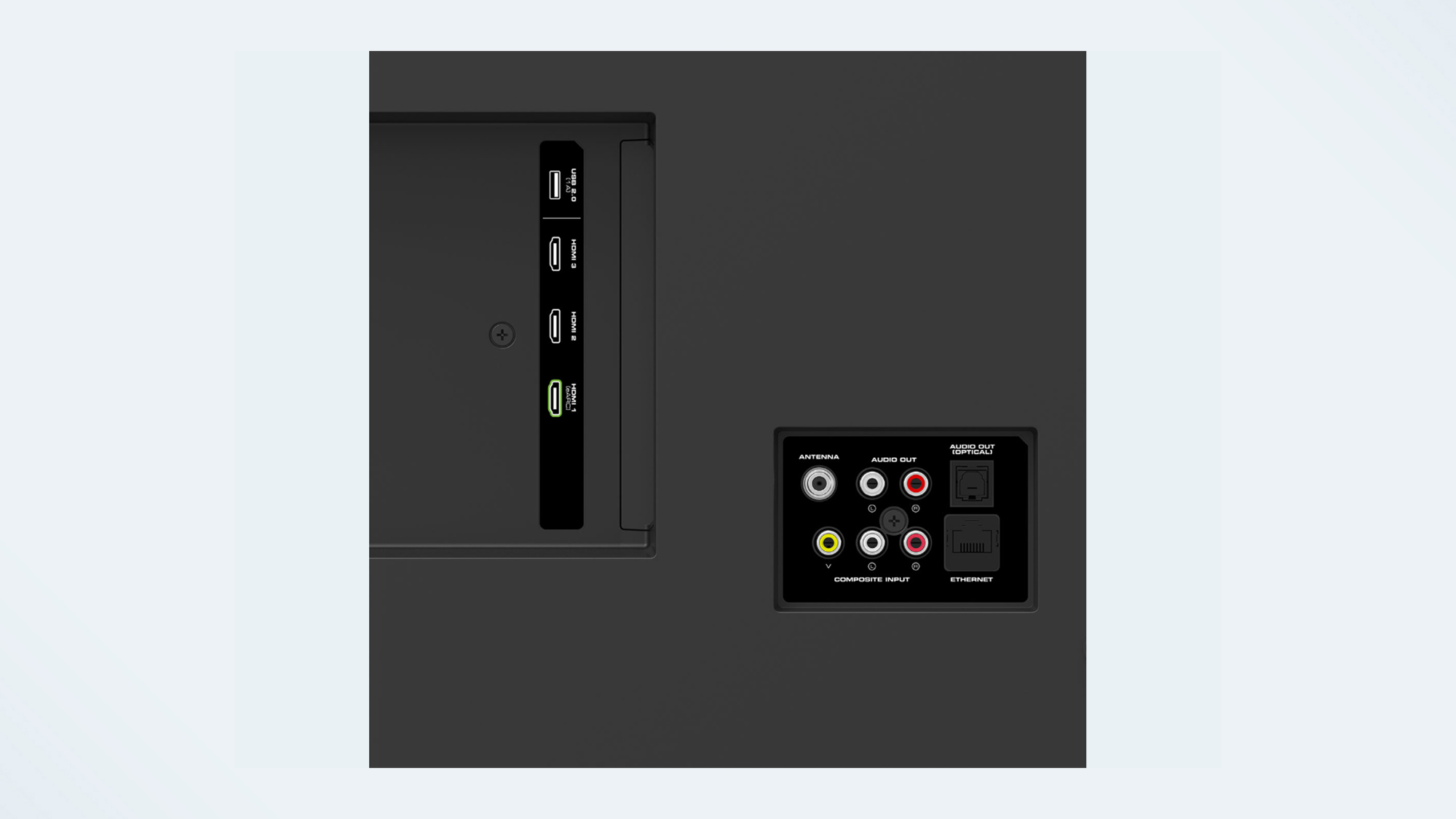
In addition, there is a USB port, Ethernet connection, headphone jack, RF connection for an antenna, and digital audio output. There's even a set of composite video inputs for ancient video sources like a VCR. For more up-to-date entertainment sources, the V-Series has support for Apple's Airplay and Google's Chromecast built in, so you can stream media from compatible devices. And, of course, to set everything up and get online, the TV has built-in Wi-Fi 802.11ac with dual band support.
Vizio V-Series review: Performance
We noticed immediately that the low brightness of the Vizio V-Series made a difference in what video mode we judged was best for everyday viewing. Almost without exception, the calibrated or movie mode on most TVs delivers the most accurate colors and contrast. However, the 50-inch V-Series looked dim and unable to render details in images in Calibrated mode. (There is no Filmmaker mode for this set.)
Switching the set to Bright mode, we expected it to oversaturate bright colors like red and make night scenes look like they were shot in bright sunlight. However, Bright mode on the Vizio V-Series did not blow out colors or make all the actors on screen look like they had sunburns.
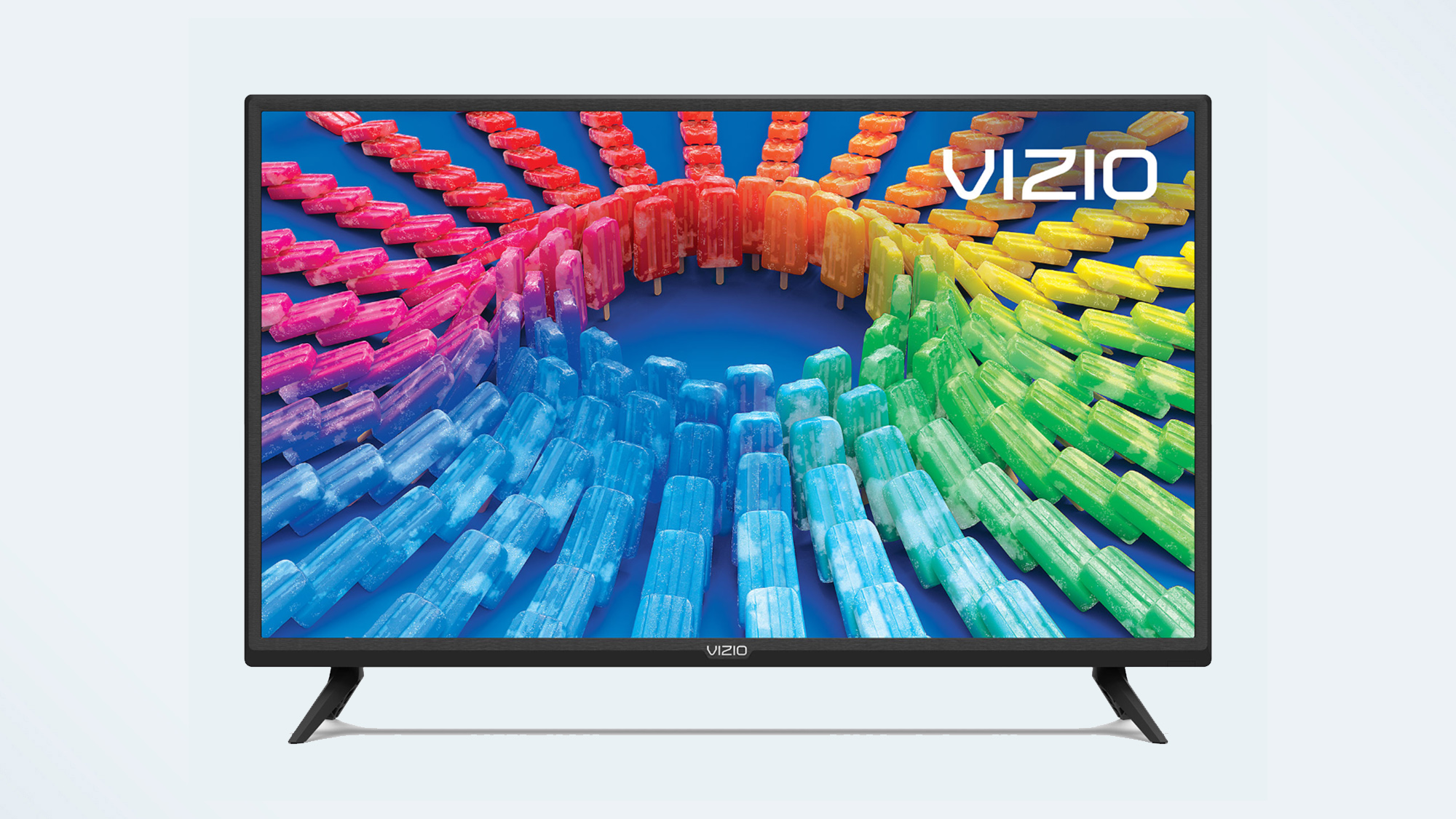
Looking at the picture settings for each mode was also intriguing. In Calibrated mode, Vizio sets the V-Series backlight at 100 percent versus Bright mode where it's 95 percent. Consider that in Calibrated mode on Vizio P-Series, the backlight is set at 60 percent (and even at that it often looks too bright). The other significant difference between the two modes on the V-Series is that the local contrast (which should adjust the full-array backlight) is off in Calibrated mode but set for low in Bright mode. Bottom line: Bright mode produces a better picture than Calibrated mode on the 50-inch V-Series.
Given that change, 4K material looked quite solid on Vizio's V-Series. Watching Lucifer produced well-defined highlights and clearly visible details that are the hallmarks of 4K. Every fly-away strand of hair was clearly defined and colors from the sky blue of a chair to aquamarine lights and a burgundy shirt looked accurate. It even produced enough detail to reveal that the actor playing the son of God wears contact lenses.
Our favorite 4K test movie, Star Wars: The Rise of Skywalker, also demonstrated that the Vizio V-Series could hold its own with high resolution content. The lighting and laser highlights were crisp, right down to the fire reflected in Kylo Ren's eyes. The set did struggle to show dark objects in shadowy scenes, such as the serpent cave, but there was no banding across subtle color transitions.
And the Vizio V-Series did very well upscaling typical HD content to 4K. In an HD version of Harry Potter and the Prisoner of Azkaban, the image looked quite good, with no glaring picture artifacts or distracting pixelation. Bright mode continued to be better here, as well. In Calibrated mode, the threatening animals in the playground at night just disappeared into the darkness.
Vizio V-Series review: Test results
The Vizio V-Series did strike some positive notes in our tests. It delivered perfectly acceptable color accuracy results, for example, with a Delta-E score of 2.4. A lower number here indicates better performance, but we think of anything around 2.2 to be acceptable. It's certainly better than the numbers we've seen from other budget-range TVs, like the TCL 4-Series Roku TV (2.8) and the 2020 Toshiba 4K Fire TV Edition 50LF621U21 (3.3).
This Vizio also looked good for gamers searching for an inexpensive big screen to do double duty. It produced one of the lowest lag times we've tested with a time of 13.1 ms. That was quicker than the smaller 43-inch TCL 4-Series (S435) we recently tested at 14 ms, and well ahead of the 43-inch Insignia Amazon Fire TV, which turned in an abysmal lag time of 38.8 ms. Just remember that all of those sets, including the Vizio V-Series, use 60 Hz displays so they can't accommodate the higher 120 Hz refresh rates of the latest Sony and Xbox consoles. If you don't need the higher refresh rates, the budget-friendly V-Series becomes one of the better affordable options of the best gaming TVs.
On the negative side, the Vizio V-Series wasn't able to display as much of the standard Rec 709 spectrum as we would have liked to see. Most 4K sets reproduce approximately 100 percent (or beyond) of the specification. The Vizio V-Series reproduced just 97.6 percent of the color gamut. What this means is that the picture may not look quite as rich as it could, particularly when compared to sets that can go beyond the traditional spec.
Furthermore, brightness was decidedly underwhelming on the Vizio V-Series. Brightness performance with a 10 percent image turned out just 272 nits. We usually see something on the order of 600 nits from higher-end sets. And even the bargain priced Insignia Amazon Fire TV (NS-43DF710NA19) we recently tested produced over 300 nits of brightness. The Vizio V-Series' lack of brightness wasn't onerous, but it did entail making some unusual settings on this set, as noted in the previous section.
Vizio V-Series review: Audio
Sound performance was not a highlight of the Vizio V-Series TV. There are only a couple of basic preset audio modes: Surround on/off and Virtual:X.
On the V-Series, with surround off, there's virtually no soundstage, and all of the audio seems to emanate from underneath the center of the TV. Turning on the Surround mode certainly helps with music. With Virtual: X engaged Steely Dan's Can't Buy a Thrill was all lead vocals, hi-hat, and maracas with an attenuated bass line. The Surround sound preset improved fidelity and re-centered the audio so that it sounded like it was coming from the screen directly.
Conversely, for movie fans, the best audio mode proved to be Virtual:X. Where it had a negative affect on most music, it enlivened film soundtracks significantly. It did a better job, for example, creating the illusion that sounds were coming from off-screen, like a ringing phone that seemed to come from a nearby but unseen office desk.
The V-Series Virtual:X mode also did better with more boisterous material and action movies, albeit at disappointing sound levels. It's not often that we can drive a TV all the way to 100 percent volume levels without deafening results, but we could easily do it with this 50-inch V-Series. If you enjoy roaring road races and stentorian soundtracks, add one of the best soundbars. The decibel levels of the V-Series are not going to do it for you. Fortunately, the Vizio V-Series set includes the eARC (enhanced audio return channel) feature on one of the HDMI outputs to easily sync up a soundbar to the set.
Vizio V-Series review: Smart TV
Eschewing the standard smart TV systems from the likes of Roku and Google, Vizio uses its own proprietary smart TV interface, which as the years go by looks more and more like others such as Android TV and the revamped webOS from LG. And that's not necessarily a bad thing; it means the interface is familiar and easy to follow.
Dubbed SmartCast, Vizio presents you with a slew of streaming options such as Magellan TV and IFC movie picks you can watch for free. Along the bottom of the screen there are large icons for popular apps including Netflix, Amazon Prime Video, Hulu, Apple TV, Disney +, and Peacock. Additional streaming services can be added via Vizio's App Catalog. It includes most of the mainstream services, including music from the likes of Spotify, Pandora, and Tidal. However, Vizio doesn't have the breadth or depth of options like Roku TV and Android TV. One app in particular that is missing from Vizio's SmartCast is the Criterion Channel, which is popular with movie fanatics.
Vizio V-Series review: Remote control
One item Vizio hasn't cut back on for the V-Series is the set's remote control. It's the same version used for the company's top P-Series Quantum X sets.
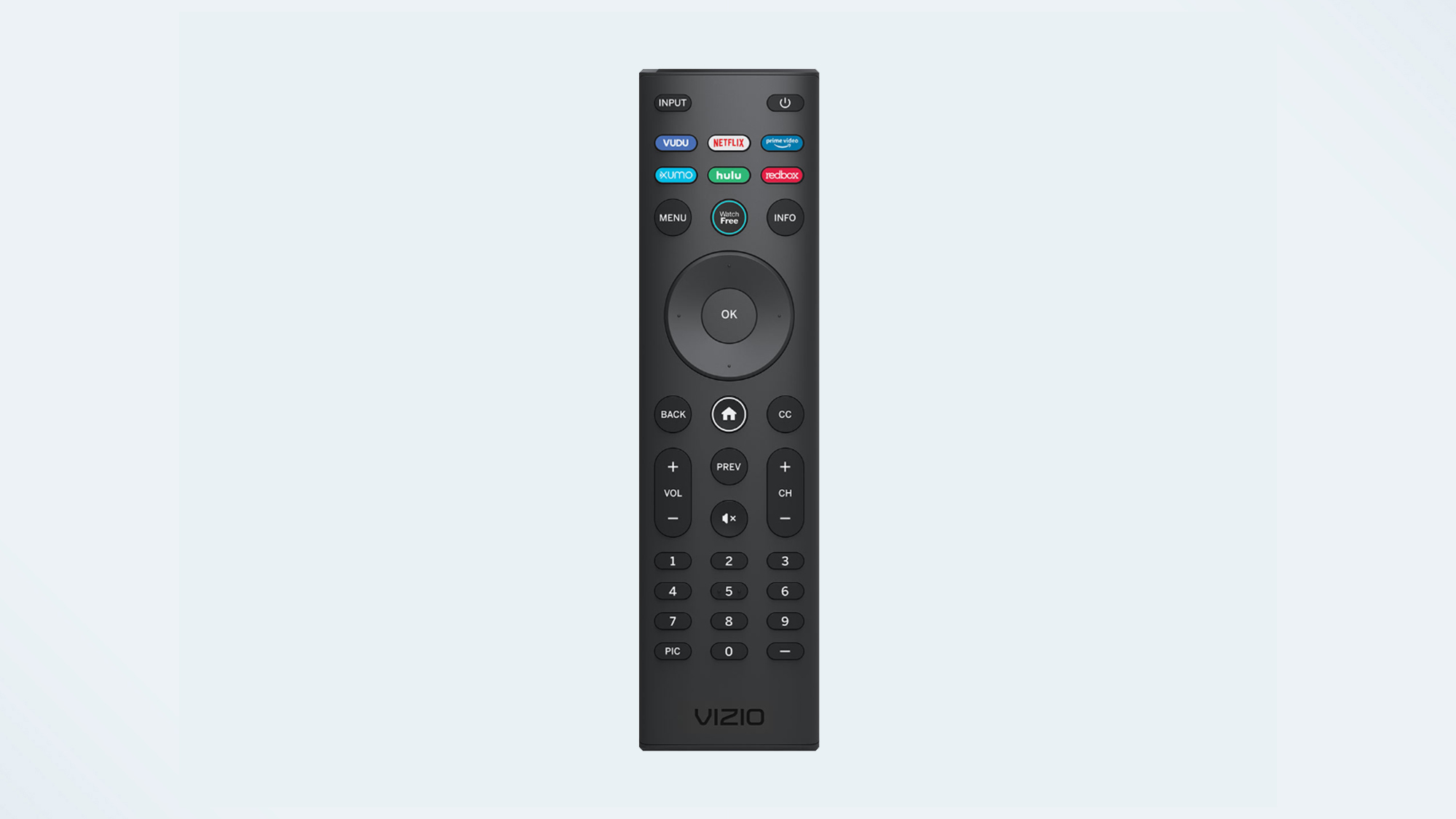
The remote control is significantly better than the older model. It is slimmer, ergonomically curved, and more logically laid out. There's still a familiar four-way thumb pad and center "Ok" button to help you navigate menus. And there's also a numeric keypad (often ignored on other remotes) and several dedicated buttons for services including Netflix and Amazon Prime Video. Appropriate for a budget priced TV, there's also a "Watch Free" button that takes you to streaming content Vizio has aggregated for viewers. One of the dedicated buttons that proved surprisingly useful was a CC button to turn closed captioning on and off. We found it perfect for those muddled soundtracks that sometimes make it impossible to hear critical dialogue.
It's worth noting, however, that this being a 2020 model of Vizio TV, you won't get the microphone-equipped remote control that comes with newer 2021 Vizio TVs.
Vizio V-Series review: Verdict
The Vizio V-Series (2020 model) is a tough sell in a competitive segment of the market catering to price-conscious buyers looking for a modestly sized set. In terms of performance, its two major weaknesses are its lack of brightness and modest audio abilities. Yet it is a better choice than some other bargain sets, which don't perform as well. With decent color accuracy and great response times for gaming, there's plenty to love about this budget-friendly TV.
Still, before you settle on the Vizio V-Series, we recommend taking a look at the TCL 4-Series Roku TV (S435), which offers a subtler picture and that easy-to-use Roku interface. In fact, to help you make your choice we've pitched them head-to-head in this TCL 4-Series vs. Vizio V-Series face-off.
John R. Quain has been reviewing and testing video and audio equipment for more than 20 years. For Tom's Guide, he has reviewed televisions, HDTV antennas, electric bikes, electric cars, as well as other outdoor equipment. He is currently a contributor to The New York Times and the CBS News television program.
